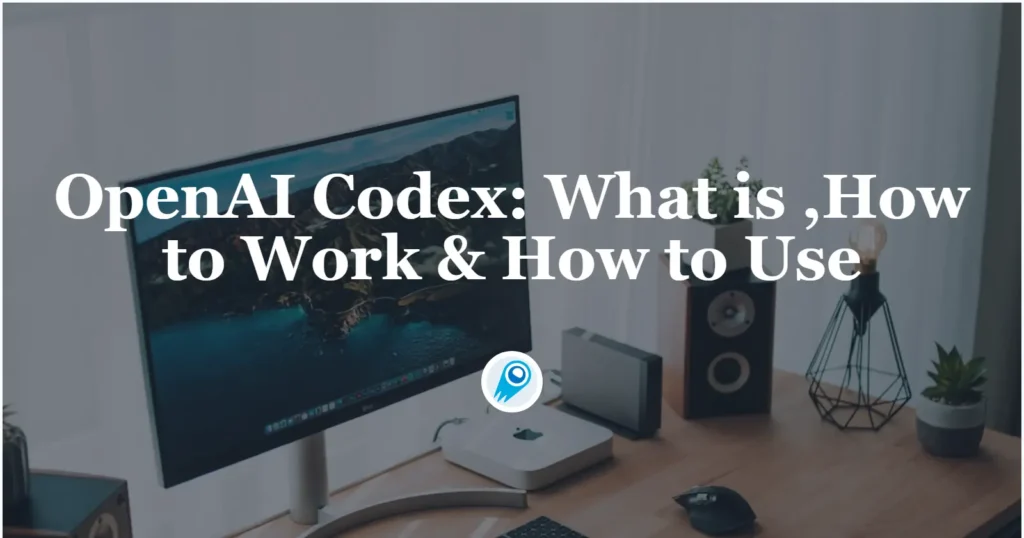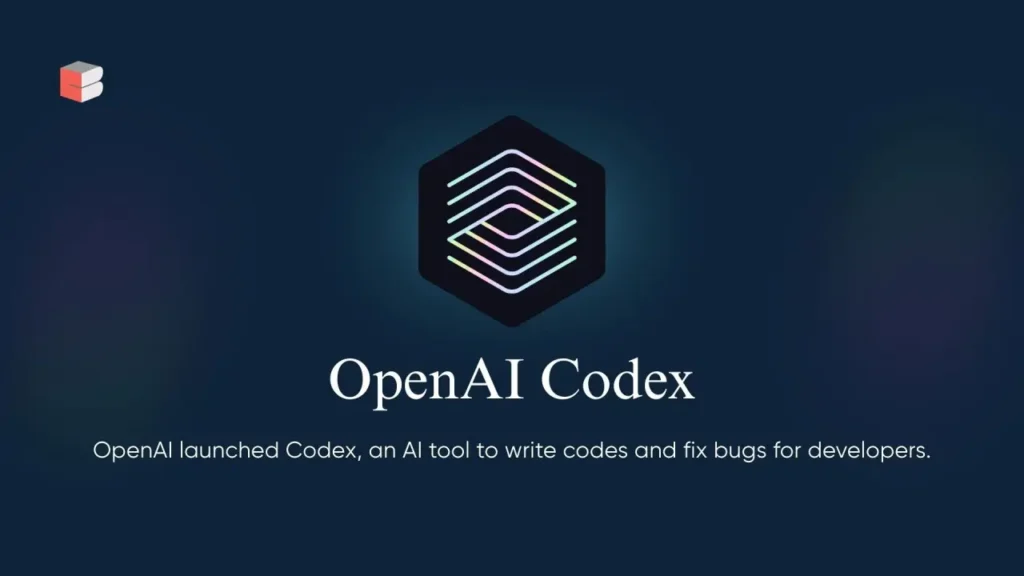OpenAI’s Codex: What it is,How to Work and How to Use

Codex has emerged as a transformative AI agent designed to augment software engineering workflows by autonomously handling tasks such as writing code, debugging, running tests, and generating pull requests. It operates as a cloud-based agent powered by codex‑1, a specialized adaptation of OpenAI’s o3 reasoning model fine‑tuned for programming contexts. Available initially to ChatGPT Pro, Team, and Enterprise users, Codex integrates directly into the ChatGPT interface, allowing developers to assign discrete tasks that run in sandboxed environments preloaded with their codebases. Since its May 16, 2025 research preview release, OpenAI has positioned Codex to compete with offerings from Google, Anthropic, and other AI innovators, while emphasizing safety, alignment, and real‑world usability through controlled environments and human feedback loops.
What is Codex?
Origins and Evolution
Codex is the latest AI-driven software engineering agent developed by OpenAI, officially unveiled on May 16, 2025, as a research preview. Unlike its predecessor, the GPT series—primarily optimized for natural language tasks—Codex is rooted in a specialized derivative of the o3 model, named codex-1, which has been fine-tuned specifically for programming workflows . Its lineage traces back to OpenAI’s work on GPT-3 and the earlier Codex model that powers tools like GitHub Copilot, but codex-1 represents a significant leap in agentic capabilities, enabling parallel task execution and autonomous interactions with development environments.
Core Architecture
At its core, Codex operates as a multi-agent system hosted in the cloud. Each coding task—be it writing new features, debugging, testing, or even proposing pull requests—is dispatched to its own isolated sandbox environment preloaded with the user’s repository. This sandboxing ensures that changes are contained and reproducible, and that Codex can iteratively run tests, linters, and type checkers until tasks pass validation. The underlying codex-1 model leverages reinforcement learning from real-world coding tasks, aligning its output closely with human coding styles and best practices.
Purpose and Positioning
OpenAI positions Codex as a transformative tool for software engineering teams, aiming to shift developers’ focus from routine implementation to higher-order design and orchestration work. By automating repetitive and well-specified tasks, Codex aspires to boost productivity, reduce context-switching, and embed itself within existing CI/CD pipelines. With competitors like Google’s Gemini, Anthropic’s Claude, and emerging startups in the agentic AI space, Codex serves as OpenAI’s strategic response to maintain leadership in AI-driven developer tooling .
How does Codex work?
Model Architecture and Training
Codex is powered by codex-1, a variant of the o3 reasoning model optimized for software engineering. Training involved two phases: a broad pretraining on large code and text corpora, followed by reinforcement learning on real-world developer tasks to refine its ability to adhere to instructions, follow repository-specific conventions, and generate test-passing code. The final model demonstrates higher accuracy in code generation, an improved understanding of repository context, and the ability to self-correct through iterative testing loops.
Parallel Task Processing
One of Codex’s standout features is its agentic, parallel task execution capability. Unlike single-threaded code generation tools, Codex can handle multiple concurrent assignments within a project. Each task is encapsulated in its own Docker-like sandbox, allowing developers to queue several tasks—such as implementing features, generating documentation snippets, or refactoring modules—and receive results independently, often within one to thirty minutes depending on complexity and compute availability .
Sandboxed Execution Environment
Security and reproducibility are paramount. Codex’s sandbox environment simulates the developer’s local setup, preloading repositories, dependencies, and configuration files. Within this isolated context, Codex can run build commands, execute test suites, invoke linters, and even interface with package managers. Upon task completion, it returns code changes, detailed test logs, and invocation results, ensuring that developers have full visibility into what was modified and why.
Integration with ChatGPT and CLI
For accessibility, Codex is integrated directly into the ChatGPT interface for Pro, Team, and Enterprise subscribers. Users can invoke Codex via the ChatGPT sidebar by typing natural language prompts—“Write a function to parse JSON logs” or “Fix the failing user-authentication test”—and choosing between “Code” and “Ask” modes. Additionally, Codex offers a command-line interface (CLI) that supports scripting and automation in local development environments, enabling seamless incorporation into existing workflows and CI/CD pipelines.

How to use Codex?
Access and Availability
Codex is currently available in research preview to ChatGPT Pro, Team, and Enterprise users, with an anticipated rollout to Plus and EDU users in the coming months. Access requires an active subscription ($200/month for Pro) and enrollment in the Codex preview program via the OpenAI dashboard. Users receive quota allocations based on subscription tier, reflecting the computational intensity of running codex-1. As OpenAI scales its infrastructure, availability and rate limits are expected to expand.
Getting Started: Creating Tasks
- Select Repository: Within the ChatGPT interface, navigate to the Codex sidebar and choose the repository (either from GitHub or an uploaded ZIP).
- Define a Task: Enter a natural language prompt describing the desired change or query. Prefix tasks with clear action verbs—“Implement,” “Refactor,” “Test,” or “Explain.”
- Choose Mode: Click Code to modify code or Ask to query documentation or repository insights.
- Execute: Codex allocates a sandbox and begins processing. A status indicator shows progress, and upon completion, you receive diffs, logs, and an execution summary.
- Review and Merge: Examine suggested changes, run additional local tests if needed, and merge via your usual pull-request workflow.
Best Practices and Tips
- Granular Prompts: Smaller, well-scoped tasks yield more accurate results than broad, multi-step requests.
- Contextual Clarity: Provide context on coding standards, preferred libraries, and test frameworks to align Codex output with team conventions.
- Iterative Refinement: Use follow-up prompts to refine incomplete or suboptimal suggestions—Codex retains context within a session.
- Sandbox Inspection: Review sandbox logs to diagnose failures or unexpected behavior before accepting changes.
Limitations and Considerations
While powerful, Codex is not infallible. It may generate non-optimal code for highly specialized frameworks, mishandle edge cases, or produce inefficiencies. Network-restricted sandboxes cannot access external APIs, limiting tasks that depend on live data fetches. Moreover, computational costs and queue times can vary based on peak demand. Organizations should treat Codex outputs as suggestions, applying rigorous code review and testing before deployment.
What are the real-world applications?
Feature Development
Codex accelerates feature development by scaffolding routine components—data models, API endpoints, and UI templates. Developers can focus on core business logic while Codex generates boilerplate code and enforces project conventions automatically.
Bug Fixing and Testing
Automated bug triage and patch generation are among Codex’s most lauded capabilities. By supplying failing test cases or error logs, developers can prompt Codex to identify culprits, propose fixes, and validate them through sandboxed test runs, significantly reducing debugging cycles .
Code Review and Refactoring
Codex can perform global refactoring tasks—renaming variables, modularizing monolithic functions, or applying security patches across the codebase. It can also draft detailed pull-request descriptions, highlighting changes and rationale, which accelerates code review throughput .
Non-Traditional Uses
Beyond pure software engineering, Codex’s ability to interact with external services has unlocked creative applications, such as automating web form submissions, integrating with ticketing platforms to file issues, or even orchestrating simple workflows like ordering takeout via online APIs—all driven by natural language prompts .
What’s next for Codex?
Planned Features and Roadmap
OpenAI has outlined several enhancements:
- Network-Enabled Sandboxes: Allowing safe outbound HTTP requests for dynamic data tasks.
- Expanded Language Support: Beyond Python, JavaScript, and TypeScript, aiming to cover Go, Rust, and more.
- On-Premises Offering: For organizations with strict data residency and compliance needs.
- Lower-Latency Modes: Leveraging o3-mini variants to provide faster, albeit less comprehensive, task execution.
Competitive Landscape
Codex competes directly with Google’s Gemini Code, Anthropic’s Sonnet models, and emerging specialist startups like Windsurf. Each platform boasts unique strengths—some prioritize open-source integration, others focus on low-code/no-code paradigms—but Codex’s tight ChatGPT integration and parallel sandboxing set it apart.
Impact on Software Engineering
As agentic AI tools mature, the role of software engineers is poised to shift from implementing code to supervising AI agents, defining high-level requirements, and ensuring system reliability. This evolution may restructure development teams, emphasizing design, security, and cross-functional collaboration over manual coding tasks.
Codex CLI and the Lightweight Version codex-mini
OpenAI has simultaneously released a terminal tool: Codex CLI, designed for use by local developers.
Its features include:
- No need for cloud services — Codex capabilities can be accessed locally;
- Supports tasks such as quick Q&A, autocompletion, and refactoring;
- Introduction of a new lightweight model: codex-mini-latest:
- Runs faster with lower latency;
- Still maintains strong command understanding and high-quality code output;
- Ideal for tasks with high real-time performance requirements.
Additionally, CLI users can now log in and configure the API directly using their ChatGPT accounts, with no need to manually generate tokens. Plus/Pro users will receive free usage credits after logging in.
Conclusion
Through its agentic design, sandboxed execution, and deep integration with ChatGPT, Codex represents a pivotal advancement in AI-driven software engineering. While still in its research preview phase, it has already begun reshaping how developers approach everyday tasks—streamlining workflows, reducing manual toil, and opening new avenues for productivity and innovation. As Codex evolves and matures, its influence on the software development lifecycle is likely to grow, heralding a new era where AI agents become indispensable partners in building the digital world.
Getting Started
CometAPI provides a unified REST interface that aggregates hundreds of AI models—including ChatGPT family—under a consistent endpoint, with built-in API-key management, usage quotas, and billing dashboards. Instead of juggling multiple vendor URLs and credentials.
Developers can access latest chatgpt API GPT-4.1 API through CometAPI. To begin, explore the model’s capabilities in the Playground and consult the API guide for detailed instructions. Note that some developers may need to verify their organization before using the model.


